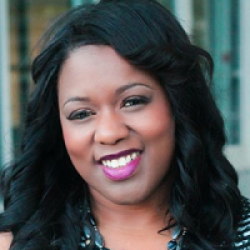
Before the pandemic, most school leaders and their leadership style would be classified as “traditional.”
These leaders were deemed successful by being good managers and instructional leaders. Their schools have systems in place to help maintain orderly climates, recruit and hire highly qualified staff, and secure resources to implement best practices. They built a culture of data-driven planning, produced master schedules, provided diverse course offerings and classroom structures to maximize learning. There is a climate of urgency, to make sure that monitoring, feedback, and interventions are in place, to ensure that the school is on track to meet the expected criteria for assessing its effectiveness.
In the “Fixed Mindset Leader-Traditional Leader” style, leadership becomes very routine with all of the boxes checked, and they celebrate and maintain the “success” accomplished. But what was the response when the unexpected, unexplored, devastating circumstances of the Covid-19 pandemic occurred?
Under the Fixed Mindset Leadership Style, one person has the primary responsibility for decision making and the management of the school. Many of these leaders have operated with a fixed mindset, “If It Ain’t Broke Don’t Fix It”. After Covid-19, traditional systems did not operate properly, resulting in confusion and major disruptions to many children’s education. Leadership had been centered around a limited number of individuals, which handicapped thinking about the need for others to take on leadership roles unexpectedly.
In remote learning, the need for shared leadership has been elevated.
Prior to the pandemic, instructional decisions and school improvement plans were basically driven by campus principals and their administrative team, plus central district office leaders. The teachers who would be responsible for implementing the plans were typically not closely involved. Their title was department or grade level chairperson, and their role was to listen to the plan already developed and share it with the teachers in their department. Few to no opportunities were provided to solicit their input before finalizing the plan.
When remote and/or blended learning were required by the pandemic, teachers had to plan and implement creative ways to engage students and modify their lesson delivery. In order to be effective, they were now called upon to be instructional leaders and given the autonomy to do what works.
This is a big shift, and it calls for school leaders to have a “Growth Mindset-Innovative Leadership” model. They need to provide empowering roles for staff, and promote effective student engagement including new technology and instructional practices such as Project Based Learning (PBL).
PBL school leaders have always focused on meeting the needs of all involved and creating opportunities for growth for both teachers and students.
I explained this in my 2018 post, “PBL School Collaboration: 3 Strategies for School Leaders.” Shifting that norm to a virtual setting was a top priority, and the Innovative Leaders of PBL schools could quickly adjust and put systems in place to function effectively.
In a remote or blended learning environment, innovative leaders cultivate new leaders with shared leadership practices and an inclusive management style. The Innovative Leader acknowledges the value of integrating ideas from the central office leadership with campus-level leadership. Teachers are considered key players throughout the process and their voices are a part of the planning from start to finish.
As a PBL leader, I’ve found the transition to virtual teaching and learning has proven to be a valuable connector to creating the best learning environment for our students.
We’re pushing to continue high-quality student engagement and meaningful learning opportunities, using equitable instructional strategies and adjustable schedules to meet the needs of students in our new virtual location.
The pandemic has caused many transformational changes, and revealed qualities within ourselves as educators, students, and parents. The response to the need to rethink school processes has revealed leaders who are limited in their ability to adapt to unexpected circumstances. My hope is that more leaders will change their direction as a visionary builder, embrace the growth mindset and succeed!

